- Overview
- Trip Outline
- Trip Includes
- Trip Excludes
- Gallery
- Reviews
- Booking
- FAQ
About:
Mysore officially Mysuru, is a metropolitan city in the southern Indian state of Karnataka. It is the state's third-most populous and is one of the cleanest cities in India according to Swachh Survekshan. It is the seat of the Wadiyar dynasty and was the capital of the Kingdom of Mysore for almost six centuries, from 1399 until 1947. It is currently the headquarters of Mysore district and Mysore division. Known for its heritage structures and palaces, including the famous Mysore Palace, and noted for its culture, Mysore is popularly known as the "City of Palaces", the "Heritage City", and the "Cultural Capital of Karnataka". For its pristine and calm ambience, it is also known as "Pensioners' Paradise".
Mysore is situated at the foothills of the Chamundi Hills. At an altitude of 770 m (2,530 ft) above mean sea level, the city of Mysore is geographically located at 12° 18′ 26″ north latitude and 76° 38′ 59″ east longitude. It is about 140 km (87.0 mi) southwest of the state's capital, Bangalore, and spreads across an area of 156 km2 (60 sq mi) (City + neighbouring census towns). The population of the city combined with its neighbouring towns in its metropolitan area is about 12,88,000 in 2023.
Most of the city's development during modern times could be attributed to the maharajas of Mysore and the Wadiyar dynasty, who were patrons of art and culture. Hyder Ali and Tipu, when they were briefly in power in succession, also contributed significantly to the economic growth of the city and the kingdom by planting mulberry trees and silk in the region, and fighting four wars against the British. In present days, the Mysore City Corporation is responsible for the civic administration of the city.
During the Dasara festivals, Mysore receives hundreds of thousands of tourists from around the world. The city is also the namesake to various art forms and culture, such as Mysore Dasara and Mysore painting; eateries such as the sweet delicacy Mysore Pak, breakfasts like Mysore Dosa and Mysore Masala Dosa; brands such as Mysore Sandal Soap, Mysore Paints; and styles and cosmetics such as Mysore Peta, a traditional silk turban, and the Mysore silk saris. Mysore is also known for betel leaves and its own special variety of jasmine flower fondly referred to as "Mysore Mallige". Tourism is a lifeline industry for the city alongside the traditional industries. Mysore's intracity public transportation includes bus and intercity public transportation includes rail, bus, and air.
History: The site where Mysore Palace now stands was occupied by a village named Puragere at the beginning of the 16th century. The Mahishūru Fort was constructed in 1524 by Chamaraja Wodeyar III (1513–1553), who passed on the dominion of Puragere to his son Chamaraja Wodeyar IV (1572–1576). Since the 16th century, the name of Mayashūru has commonly been used to denote the city. The Kingdom of Mysore, governed by the Wodeyar family, initially served as a vassal state of the Vijayanagara Empire. With the decline of that empire after the Battle of Talikota in 1565, the Mysore Kingdom gradually achieved independence, and by the time of King Narasaraja Wodeyar (1637), it had become a sovereign state. Seringapatam, near Mysore, the present-day Srirangapatna, was the capital of the kingdom beginning in 1610. The 17th century saw a steady expansion of its territory and, under Narasaraja Wodeyar I and Chikka Devaraja Wodeyar, the kingdom annexed large areas of what is now southern Karnataka and parts of Tamil Nadu, to become a powerful state in the southern Deccan.
The kingdom reached the height of its military power and dominion in the latter half of the 18th century, under the de facto rulers Hyder Ali and his son Tipu Sultan. The latter demolished parts of Mysore to remove legacies of the Wodeyar dynasty. During this time, the kingdom of Mysore came into conflict with the Marathas, the British, and the Nizam of Hyderabad, leading to the four Anglo-Mysore wars, success in the first two of which was followed by defeat in the third and fourth. After Tipu Sultan's death in the Fourth Anglo-Mysore War in 1799, the capital of the kingdom was moved back to Mysore from Seringapatam and the kingdom was distributed by the British to their allies of the Fourth Anglo-Mysore War. Part of the kingdom was annexed into the Madras Presidency, another to the Nizam of Hyderabad. The landlocked interior of the defeated kingdom of Mysore was turned into a princely state under the suzerainty of the British Crown, with the five-year-old Wodeyar Krishnaraja III as titular ruler and with Purnaiah, who had served under Tipu, as chief minister or Diwan and Lt. Col. Barry Close as Resident. The British took control of Mysore's foreign policy and insisted on an annual tribute for maintaining a standing British army at Mysore. Purnaiah is credited with improving Mysore's public works. In 1831, claiming there was maladministration, the British took direct control of the princely state. For the next fifty years, the kingdom of Mysore was under the direct rule of British Commissioners, and in 1831 the city of Mysore lost its status as the administrative centre, when the British Commissioner moved the capital to Bangalore.
Over the years, Mysore became well known as a centre for tourism; the city remained largely peaceful, except for occasional riots related to the Kaveri River Water Dispute. Among the events that took place in Mysore and made national headlines were a fire at a television studio that claimed 62 lives in 1989, and the sudden deaths of many animals at the Mysore Zoo
Best Time Visit: October to March
Transportation
Road: Mysore is connected by National Highway 212 (India) to the state border town of Gundlupet, where the road forks into the states of Kerala and Tamil Nadu. State Highway 17, which connects Mysore to Bangalore, was upgraded to a four-lane highway in 2006, reducing travel time between the two cities. A project was planned in 1994 to construct a new expressway to connect Bangalore and Mysore. After numerous legal hurdles, it remains unfinished as of 2012. State Highway 33 and National Highway 275 which connect Mysore to H D Kote and Mangalore respectively. The Karnataka State Road Transport Corporation (KSRTC) and other private agencies operate buses both within the city and between cities. A new division of KSRTC called Mysore City Transport Corporation (MCTC) has been proposed. Within the city, buses are cheap and popular means of transport, auto-rickshaws are also available and tongas (horse-drawn carriages) are popular with tourists. Mysore also has a 42.5-kilometre (26.4 mi) long ring road that is being upgraded to six lanes by the MUDA. Mysore has implemented Intelligent Transport System (ITS) to manage its city buses and ferrying commuters.
Rail: Mysore railway station has three lines, connecting it to Bangalore, Mangalore, and Chamarajanagar. The first railway line established in the city was the Bangalore–Mysore Junction metre gauge line, which was commissioned in 1882. Railway lines that connect the city to Chamarajanagara and Mangalore are unelectrified single track and the track that connects to Bengaluru is electrified double track. Mysore Railway Junction comes under the jurisdiction of South Western Railway Zone. Within the city limits of Mysore, there are two small stations in the line which connects Chamarajanagara. They are Ashokpuram and Chamarajapuram. The fastest train to serve the city is the Shatabdi Express which goes to Chennai via Bangalore. A satellite terminal is planned at Naganahalli to reduce congestion in the main railway station. On 20 June 2022, Prime Minister Narendra Modi laid the foundation to upgrade the present city railway junction. The 385 crore project envisages construction of another three platforms, four pit lines and four stabling lines to make nine platforms. Additionally, the Naganahali station will be expanded with a coach complex and MEMU hub, and two more platforms to reduce congestion in the city railway junction.
Air: Mysore Airport is a domestic airport and is located near the village of Mandakalli, 10 kilometres 10 km (6 mi) south of the centre of the city. It was built by the kings of Mysore in early 1940s. Mysore Airport currently serves the city of Mysore and is connected to multiple domestic locations including Bangalore, Chennai, Goa, Hubli, Hyderabad, Kochi and Mangalore. The current runway is not able to handle big flights and hence a runway expansion is about to take place expanding the runway from 1.7 km to 2.8 km and will be upgraded to international airport after the expansion. The nearest International airport is Bangalore Airport.
Trin Trin PBS: A public bicycle-sharing system, Trin Trin, funded partially by the United Nations is popular mode of transport. It is a government project. It is the first public bike-sharing system throughout India. The key objective of Trin Trin is to encourage local commuters, as well as visitors, to use the bicycle in preference to motorised modes of travel and thereby help scale down the multifarious environmental and road-traffic hazards, enhance conveyance convenience, and make local daily commutes economical for the common citizen
No details found.
Itineraries
Day 1
Bangalore to Mysore
After on arrival Meet our representative at Airport and proceed Mysore, On the way you can visit sightseeing in Srirangpatna which includes Ranganathaswamy Temple, Daria Daulat Bagh, Ranganathittu Bird Sanctuary, Tipu Sultan Fort, then on arrival at Mysore, check in to the hotel and after fresh up proceed to visit local sightseeing in Mysore like Chamundeshwari Temple, Brindavan garden. After that return back to the hotel and overnight stay at Mysore.
Day 2
Mysore to Bangalore
After breakfast check out from hotel & proceeds to Mysore visit, local sightseeing like Mysore Sand Sculpture Museum, Sri Chamarajendra Zoological Gardens, Mysore Maharajah's Palace. Then proceed to Bangalore for the drop. Tour ends with sweet and great memories with Grabur Holidays Pvt Ltd.
- Accommodation 01 rooms for 01 night.
- Breakfast complimentary.
- All taxes of hotels and vehicles.
- All sightseeing and transfer by Dzire AC/ similar.
- Toll, Parking, Driver Allowance, Fuel Charges.
- Monument Entrance fee at places.
- Personal expenses like shopping and Laundry.
- Travel Insurance.
- GST 05% extra on the total amount.
- Lunch & Dinner at all places.
No Details Found

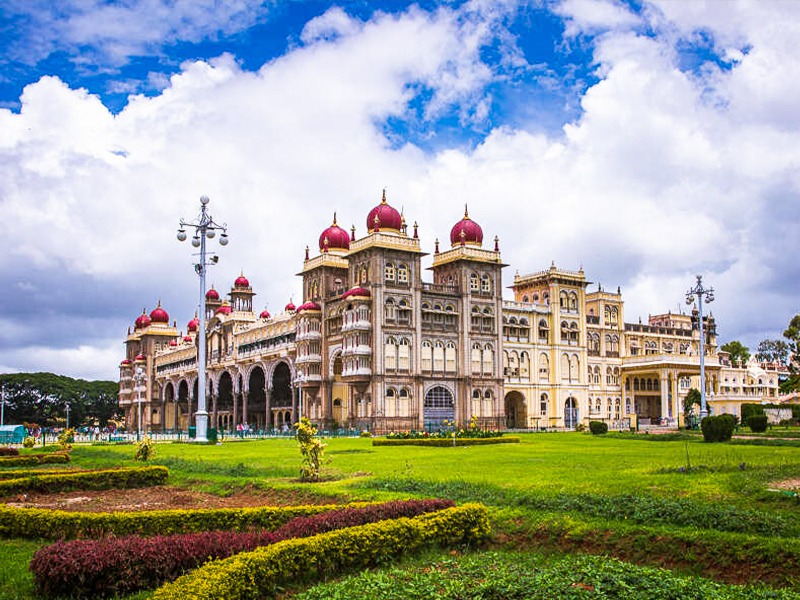
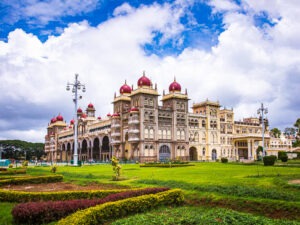
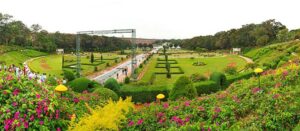
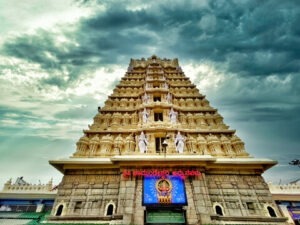
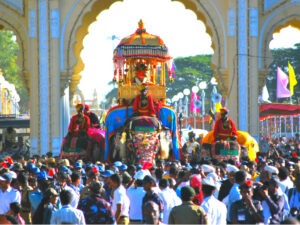
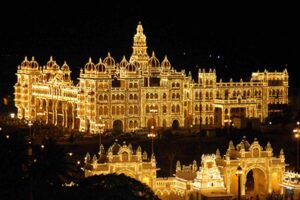

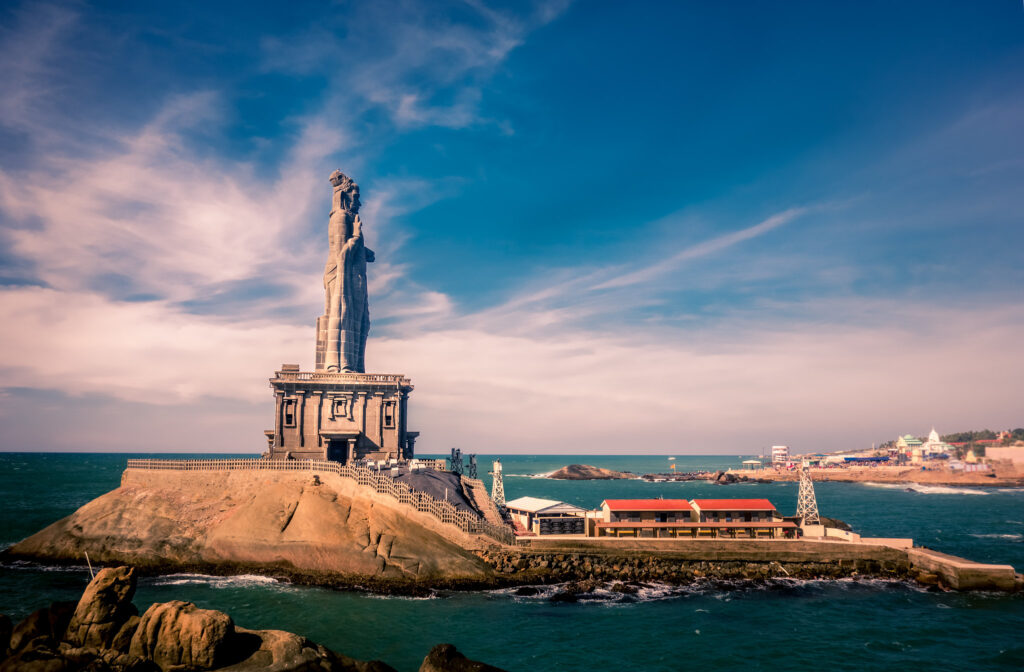
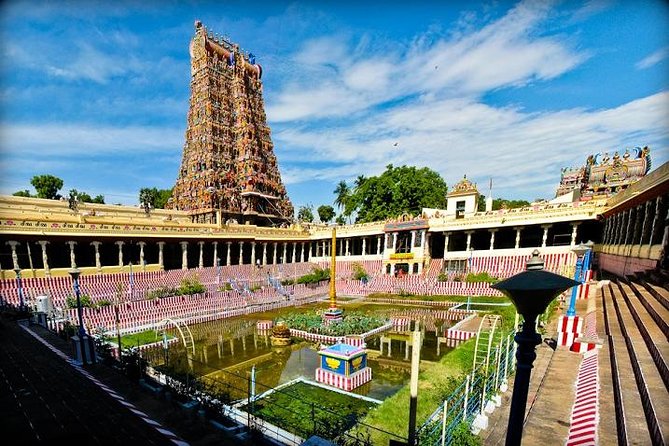
There are no reviews yet.